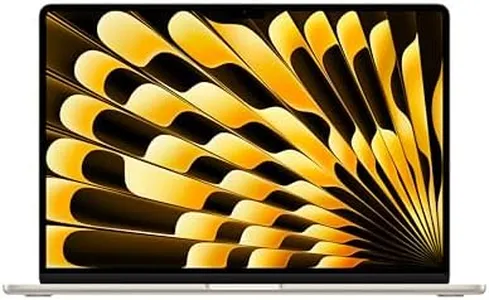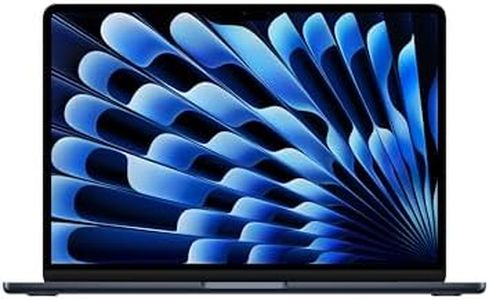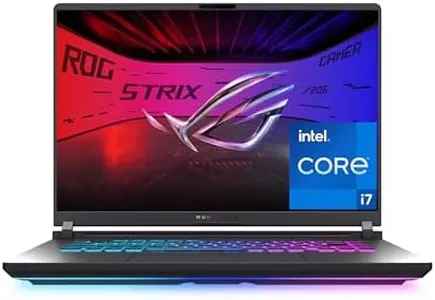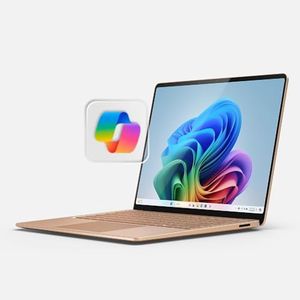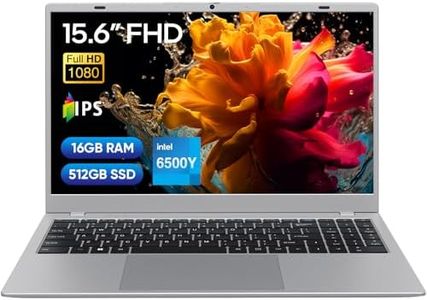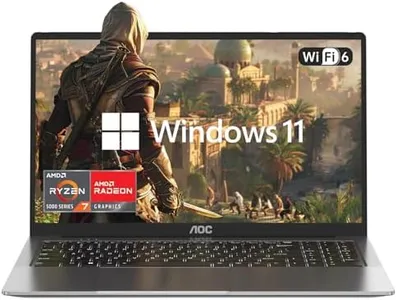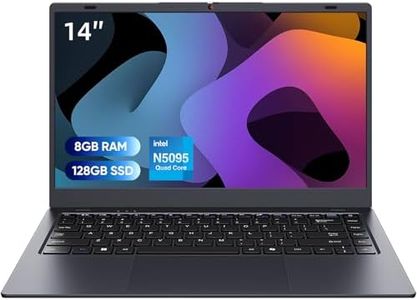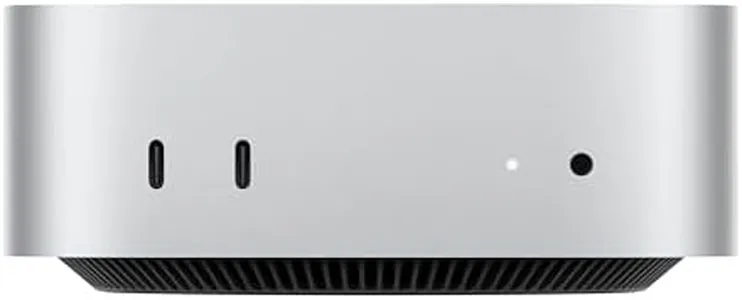10 Best Home Computers 2025 in the United States
Our technology thoroughly searches through the online shopping world, reviewing hundreds of sites. We then process and analyze this information, updating in real-time to bring you the latest top-rated products. This way, you always get the best and most current options available.

Our Top Picks
Winner
Apple 2025 MacBook Air 15-inch Laptop with M4 chip: Built for Apple Intelligence, 15.3-inch Liquid Retina Display, 16GB Unified Memory, 256GB SSD Storage, 12MP Center Stage Camera, Touch ID; Starlight
Most important from
1509 reviews
The Apple 2025 MacBook Air 15-inch is a strong choice for home computer users seeking a reliable, lightweight laptop with solid performance. Powered by Apple’s new M4 chip, it offers a fast and smooth experience, whether you’re browsing the web, working on documents, or even handling some video editing and casual gaming. The 16GB of unified memory helps with multitasking, allowing you to switch between apps without slowdowns. However, the 256GB SSD storage, while speedy, may feel limited if you store a lot of large files like videos and photos, so you might need external storage eventually.
The integrated 10-core GPU delivers decent graphics performance for everyday use and some creative tasks but is not designed for heavy gaming or professional 3D work. The 15.3-inch Liquid Retina display is a major highlight, offering sharp, colorful visuals and plenty of screen space for comfortable viewing. With macOS, you get an intuitive operating system that works seamlessly with other Apple devices, making tasks like sharing files or answering calls from your Mac easy. Battery life is impressive, lasting up to 18 hours on a single charge, which is great for home users who want to use the laptop unplugged for long stretches.
The laptop’s slim and light design (just over 3 pounds) makes it easy to move around the house or take on the go. It includes useful extras like a high-quality 12MP camera with Center Stage for video calls, a backlit keyboard, and Touch ID for secure login. On the downside, the base model’s storage might be tight for some, and the number of ports is limited to two Thunderbolt 4 USB-C ports, which could require adapters for older devices. Also, this laptop is best suited for users already comfortable or invested in the Apple ecosystem, as macOS differs from Windows in software availability and interface. If you want a stylish, powerful, and portable laptop for general home and light creative use, the MacBook Air with M4 chip presents a compelling option, especially if you appreciate excellent display quality and long battery life.
Most important from
1509 reviews
Apple 2025 MacBook Air 13-inch Laptop with M4 chip: Built for Apple Intelligence, 13.6-inch Liquid Retina Display, 16GB Unified Memory, 256GB SSD Storage, 12MP Center Stage Camera, Touch ID; Midnight
Most important from
4232 reviews
The Apple 2025 MacBook Air 13-inch is a sleek and lightweight laptop designed for everyday home computing, with a strong focus on speed and portability. Powered by Apple's latest M4 chip, it offers a fast and smooth experience when switching between apps, editing videos, or even casual gaming, thanks to its 10-core CPU and 8-core GPU. The 16GB of unified memory helps keep multitasking smooth, making it suitable for most home tasks without lag. Its 256GB SSD storage is quick but might feel a bit tight if you plan to store lots of photos, videos, or large files. The 13.6-inch Liquid Retina display brings vibrant colors and sharp details, great for watching videos, browsing, or working on photos. Battery life is impressive, lasting up to 18 hours on a single charge, ideal if you want a computer that can last all day without plugging in.
The MacBook Air runs macOS, which supports popular apps like Microsoft Office and Adobe Creative Cloud, and integrates seamlessly with other Apple devices, making it a good choice if you already use iPhones or iPads. Connectivity options include two Thunderbolt 4 ports and MagSafe charging, though it doesn’t offer many ports beyond this. The laptop includes a high-quality 12MP camera and excellent sound, making video calls clear and enjoyable. It has integrated graphics rather than a dedicated graphics card, so it is less suited for demanding gaming or heavy 3D work. This MacBook Air is ideal for home users who value a lightweight, fast, and visually pleasing laptop primarily for everyday tasks, media consumption, and creative work, but those needing large storage or serious gaming power may want to look elsewhere.
Most important from
4232 reviews
ASUS ROG Strix G16 (2025) Gaming Laptop, 16” FHD+ 16:10 165Hz/3ms Display, NVIDIA® GeForce RTX™ 5060 Laptop GPU, Intel® Core™ i7 Processor 14650HX, 16GB DDR5, 1TB Gen 4 SSD, Wi-Fi 7, Windows 11 Home
Most important from
351 reviews
The ASUS ROG Strix G16 (2025) is a powerful gaming laptop well-suited for gamers and users who want strong performance at home. It runs on a fast Intel Core i7 processor capable of handling demanding tasks and games smoothly. With 16GB of DDR5 memory, multitasking and running modern applications should feel quick and responsive. The 1TB PCIe Gen 4 SSD offers plenty of fast storage for games, files, and programs, meaning you won’t have to wait long for loading times.
The laptop’s standout feature is its NVIDIA GeForce RTX 5060 graphics card, which supports the latest gaming technologies and delivers excellent visuals on the 16-inch screen. This display has a 165Hz refresh rate and reduced glare, providing smooth and clear images ideal for gaming and entertainment. Cooling is another strong point with advanced technology that keeps the laptop from overheating, so performance stays high even during long sessions.
For convenience, it includes Windows 11 Home for a user-friendly experience and supports Wi-Fi 7 for fast internet connections. The design also offers easy upgrades without tools, letting you add more memory or storage down the line. The laptop is relatively heavy, which might make it less comfortable for frequent carrying. While the integrated graphics are mentioned alongside the dedicated GPU, the NVIDIA GeForce RTX 5060 is the main graphics engine for gaming. This model provides a great balance of speed, graphics power, and modern features for home users who enjoy gaming or need a strong all-around machine, making it ideal for handling both games and creative work without struggle.
Most important from
351 reviews
Buying Guide for the Best Home Computers
Choosing the right home computer can be a daunting task, but with a little guidance, you can find the perfect fit for your needs. Whether you're looking for a machine to handle everyday tasks, gaming, or creative work, understanding the key specifications will help you make an informed decision. Here are the essential specs to consider when shopping for a home computer.FAQ
Most Popular Categories Right Now
